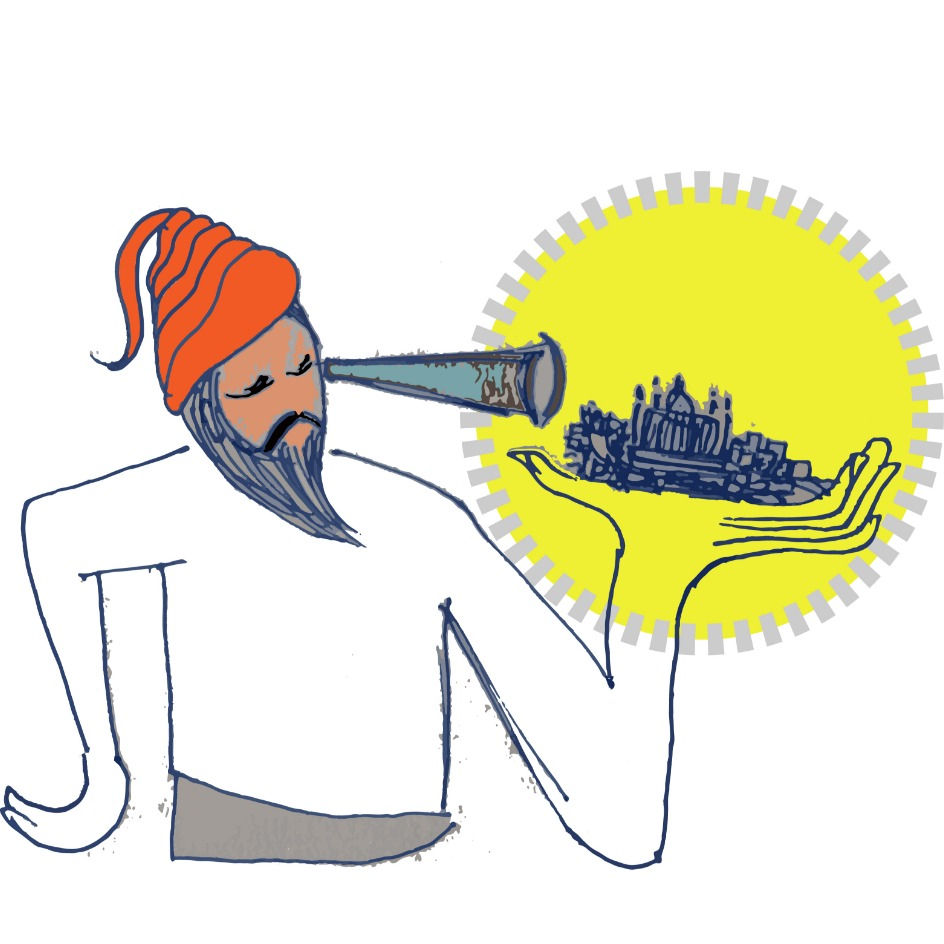|| THE MUGHAL CITY OF 'AGRA' ||
- tifCDS

- Aug 19, 2018
- 4 min read
# Post 3 # Series 1_Anecdotes : What's in a name !


Agra, is a city along the bank of River Yamuna in the state of Uttar Pradesh in the North of India. It is one of the smaller cities and yet one of the most globally visited tourist destinations in the country, for it houses one of the Seven Wonders of the World - the Taj Mahal. However, although Agra is popular in terms of global footfall, I have noted it to be relatively insignificant as a city on its own in today’s times. Most tourists from abroad seem to mentally map it to be a part of India’s present day capital Delhi, most times addressing it as outskirts of New Delhi while charting out their travels. This may not come as a surprise that not many know of Agra beyond the Taj Mahal as its identity.
Have you ever wondered what makes this city of Agra beyond this beautiful monument? Why was Taj Mahal – the most beautiful tomb in the world, been built in a city like Agra? What relevance does the name ‘Agra’ hold in history? Does it’s name hold stories of its own glorious being beyond housing the Taj Mahal? This article aims to unveil and enthrall you in a little more of Agra than you may know of. Here’s a narration intended to dust off tales of Agra and throw some light on its own glorious existence.
The earliest reference of this city was first made as back as the 10th century BC in the epic mythological text ‘Mahabharata’ as ‘Agrevana’ which meant ‘the border of the forest’ in Sanskrit language. It was also mentioned as ‘Agrabana’ meaning ‘Paradise’. The name is even said to hold linkages dating much back to times of Mahirshi Angira of Vedic fame. In other sources, Agra has been referred to as ‘AryaGriha’ or the ‘abode of the Aryans’.

The early history of Agra lacks literary and material sources for the period prior to the 12th century A.D. Several theories were propounded regarding its nomenclature. Some proposed that the name derives from ‘āga’ (fire) or ‘agwāra’ (enclosure for fire). Others say it was derived from terms as ‘agara’ (a salt pit) or ‘agara’ (house of habitation). Some say ‘agra’ meant ‘first/prior’ or ‘agravana’ associating to one of the twelve forests of Brajmandala. Some proposed it was probably from ‘agrawal’ (a sub-caste of the Vaisyas) or ‘āgē-rau’ meaning ‘the site that is ahead on the way’. According to some stray numismatic and archaeological findings, it appears that there was an earlier town at the site known as ‘Yamaprastha’. It is further held that the foundation of Agra was laid during the reign of ‘Ugrasen’ and hence the evolved name and it being the scene of incarnation of Lord Vishnu had emerged as a severed town.
Its name later finds mention only to be renamed ‘Akbarabad’ during the Mughal era by its glorious historic ruler Akbar – ‘Akbar’ meaning ‘greatest’ in Arabic. It remained the capital of the Mughal Empire under this name itself. It was only after the decline of the Mughal Empire and during the reign of the Marathas that ‘Akbarabad’ became ‘Agra’ as we know it today. Agra has a rich historical background which is amply evident from the numerous remains of historical monuments in and around the city. However, the first person who officially makes mention of Agra by its modern name was Ptolemy, the famous 2nd century A.D. geographer who marked it on his map of the world as ‘Agra’.

Another folklore by the author of Tarikh-i Daudi mentions “The Hindus assert that Agra was a stronghold in the days of Raja Kans, who ruled Mathura. Everyone that displeased him, were confined in the fort at the former place, and that in course of time, Agra had become an established state prison”.
The hazy history of Agra clears only after the tenth century, somewhere around the Mughals! According to the Mughal ruler Jahangir; even before the Lodi Sultans made it their capital, Agra was a big city with a fortress. It was mentioned with high praise by the Ghaznavid poet Mas‘ud Sa‘ad Salman. Stories of victory over Agra by the Ghaznavids are mentioned by him. In the Tarikh-i Khan Jahani, Lodi mentions the existence of a fort at Agra (the ‘state prison’ of Tarikh-i Daudi). In 1491 A.D, Sultan Sikandar Lodi is reported to have stayed there during his visit to the city. He went ahead and founded Agra to be the capital of the Delhi Sultanate in the early 16 th century A.D. The emergence of Agra as a viable city probably coincided with the decline in the fortunes of Delhi after its sack by the forces of Timur. One among the factors responsible for this was its strategic geopolitical location, making it a prime pit-stop enroute to Rajasthan, Malwa and Bengal.

Well, the most relevant information I have sourced on this piece of research was that Agra was called ‘Akbarabad’ until the Mughal capital shifted when the Marathas took over the city. The great Maratha ruler Shivaji is said to have renamed it to ‘Agra’ as we know it today, ‘Agr’ in the marathi dialect meaning ‘holding a great or highest place’, also meaning ‘first or ahead / forward’.
Does it not intrigue you to realize that although it was the capital city of the Mughals and ruled over for almost a century, its name did not last influenced by its Mughal glory! This etymological excavation of the ‘City of Taj’ seems to have been quite a search personally for me, trying to find its blurry deep nomenclature roots as compared to my research on other Indian cities. Having been more significant than Delhi at one time in history, doesn’t it totally change your outlook towards this charming city?
Although a hazy past, Agra by itself was definitely ‘the Taj’ or ‘the crown’ of its times as the capital of the Mighty Mughal Empire for a 100 years - a lesser known fact yet of so much relevance to its entire existence! It may not seem to be a remarkably livable city as compared to its contemporaries in today’s date, besides being a global tourist destination because of the Taj Mahal; but it truly was once one of the greatest cities in Indian history! Would’nt this perspective now influence the way you look at this city next time you visit it? … And they say "what’s in a name!"














Comments